RV Tires
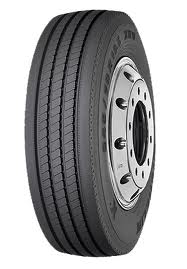
RV Tires are always a hot topic with any RV'er! Before going any further, it must be understood just how important they really are!
They are the foundation that your life rides on!
If you are considering a used motorhome for sale or any recreational vehicles used or not - tires must be very carefully considered for your safety and incidental costs!
Motorhome tires are especially expensive - can be $500 - $650 each! Now, multiply that times 6 and you are spending some very serious money!! If you're purchasing a used RV through the Internet or eBay, etc. at least ask for a picture of the Dot Codes on the tires - preferably with the numbers written out as well.
A New RV should be coming from a reputable Dealer and therefore the tires should be the correct ones for the RV.
Several key issues should be verified prior to delivery though.

DOT Tire Date Codes are critical on any RV tire. These will be a 4 digit number stamped on your tire.
As illustrated, it will be the last "stamp" in the picture (2310). The first 2 numbers will be the week of manufacturer (23)and the last 2 numbers will be the year (2010).
Each Brand will have their own maximum years of service for an RV Tire - the average maximum seems to be in the 7 year range.
Ultraviolet rays from the sun used to be a serious issue with tires. Now, recently produced tires have a great chemical compound to protect them.
However,
the manufacturers all strongly recommend that NO aftermarket
chemicals/coatings be applied to the sidewalls - it will actually hurt
the protection already in the newer tire compounds.
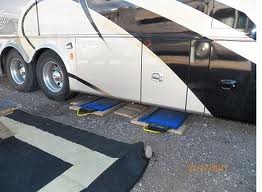
Tire Load Range Info is the amount of weight a tire can safely carry. A good rule of thumb would be to verify what the weight of the RV is, per axle and then be sure the tires on the vehicle will actually handle that weight.
RV Manufacturers are just now coming into actual compliance on the weight and tire load ranges.
Several years ago, it could easily be seen that a RV was overloaded or too small a tire just by adding passengers to the RV!
Prior to actually taking financial delivery of your RV, be sure to have it weighed FIRST! All major truck stops have very accurate scales.
At least weigh each axle and then the overall RV. It is better to be sure you can still put items into the RV before your purchase - a little late after all the money and papers are done!!
As soon as you have a chance, bring your RV to a RV Rally or Trade Show to get the individual wheels actually weighed!
That really helps you balance out your RV for best ride, tire wear and safety.
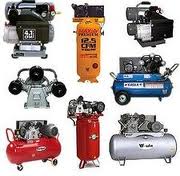
Air Pressure is often overlooked in RV tires. The amount of air pressure you have in your tires will directly influence the safety of yourself and your RV.
"Usually", the higher the air pressure, the more weight can be handled by your tires.
A good rule of thumb is to always inflate your tires in the cool of the morning, prior to driving on the tires. The air pressure within the tires will be the most accurate, at that time!
As you drive on your tires, they will build up heat and therefore increase tire air pressure so it will be inconsistent if you add/remove air after riding.
Try to be consistent with checking and adding air pressure.
If you have a Diesel Engined Vehicle, this video will be very helpful!
If you have duals in the rear, you'll have some issues getting air into those inner tires. Always use steel valve stems and really try to not use extensions for your inner tires.
Ask any trucker - guaranteed they will leak!!
Best is a dual pull/push tire air chuck that allows air pressure into the valve stem either way.
***Truck/RV Tires are a serious safety hazard***.
Personally? The best way to fill up your tires is to ask a "mobile tire road service" guy to do so - they'll have the locking air chuck, know enough to stand away from the tire and can inflate all 6 much safer than the average RV'er can - and you live to talk about it!
All that being said, if you are the one filling your tires, I would strongly recommend this device - Milton 15' Inflation Hose with Guage and locking Chucks
There are just too many incidences when someone somewhere gets killed or seriously maimed for filling a HD Tire without taking the necessary precautions - do you want to be the next headline?!?
Many RV'ers will use a small club - looks like a "mini-baseball-bat" to "thump" their RV tires before driving each time.
The thump will be a hard sounding thump and should be consistent with all tires.
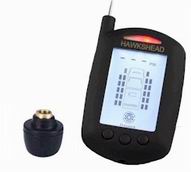
The more advanced RV'er will use a "Tire Monitoring" device that monitors tire pressure in each tire and reports it to a small hand held device in the driver area.
They can be set to "Alarm" at certain air pressure lose. Obviously, these devices are extremely useful and can save a slow leaking tire from becoming a major crisis!
They can be used for all of the tires, including a "toad", just the RV or the pickup and all the axles on the camper/5th wheel.
The
monitor is usually the "brains" of the system and it just depends on
how many tire pressure monitors you purchase for each tire.
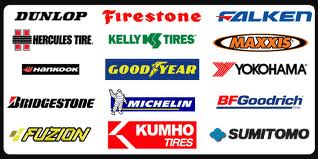
Tire Brands will always be debated amongst all RV'ers! Many will insist on only a particular brand - no matter what!!!
Well, sometimes, common sense must prevail!
All the "Major Brand" Tire Companies produce a quality RV type tire. Some brands will also charge considerably more for that tire, while others will be more "reasonable".
It really won't matter if you are looking at motorhome tires or recreational vehicle tires - safety and performance are the key!
Most RV's are NOT driven everyday for hundreds of miles at a time and therefore accumulate 1,000's of miles. Today's RV'er will typically drive anywhere from several thousand miles to a maximum of 20,000 miles.
The average is below 10,000 a year.
Well, remember that the average lifespan of an RV tire is 7 years. 10,000 miles a year for 7 years will only be 70,000 TOTAL MILES that you are using on those tires.
Major brands that guarantee really high mileage on their tires will be a mute point - unless you drive lots of miles everyday!
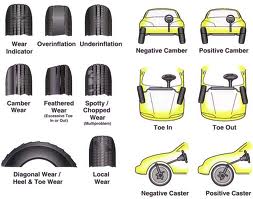
Alignment of your RV is critical, yet difficult to actually get done correctly! Many shops do alignments, but the typical RV rides on Air Bags with adjustable heights and tag axles!
The ride height of the RV MUST be resolved first, before any alignment readings are obtained.
The picture here is depicting how a car front end is aligned, but the "concept" is the same.
The wheels are controlled with a positive or negative caster setting, usually to provide a better steering "feel" and the camber and toe settings are more for keeping the tires positioned the best possible way on the road surface.
Some front ends are a "straight axle" and therefore will need shims to realign the wheels properly.
There is no such thing as a good "cheap alignment" - it just can't happen unless your tires are already aligned and they are just "checking".
A better question for the shop - are they actually obtaining what your RV specs are supposed to be set at!
Be sure to look at the RV Repair Service Reviews before making your appointment! A good alignment shop will take their time, road test the RV, check and adjust ride height first and charge for proper adjustments.
Do yourself a big favor - do NOT expect it to be done within the hour!
If everything is still correct and within the specs for your RV tires, it will just be a matter of checking the readings and not as expensive.
No matter what - RV tires aren't cheap - why risk ruining tires with a "cheap" (and probably not done too well!) alignment?
Spare Tire?
Where the heck is it!?!?
Depending on the type RV Tires you have, will determine if you even get a spare! Most smaller RV's will have a spare.
However, it gets less and less on the bigger RV's. They simply don't have the room, are too heavy and require special tools to remove/install.
On the negative side of this, we can all appreciate what happens when you get a flat in the middle of nowhere!
Imagine waiting for hours to have a "tire repair" guy show up with his tools and truck, but no RV tires!
Worse, the "town" doesn't have your size either.
Now, we are looking at serious time and money to wait and get a tire - that probably won't match all the others.
The Class A RV has such large wheels, tires and lug nut specs that there is no point to it - the RV'er won't have the tools or proper jack to remove it - safely!
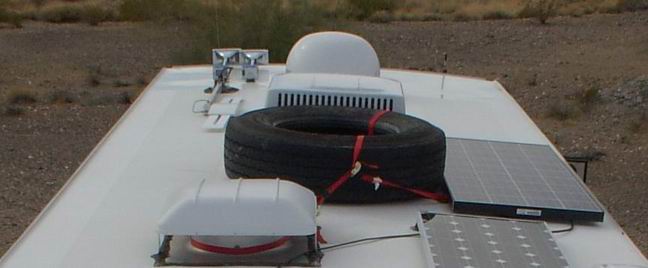
Depending on how strong your roof is (about the only place you can carry a tire) -I would strongly encourage most RV'ers - especially those who enjoy boondocking - to carry a same size tire only - no rim - up on the roof!
We purchased new tires and kept one of the old ones. We were going to Alaska that summer and had heard enough horror stores of people waiting days for a spare tire.
Luckily, we never needed it - but it's still up there, enjoying the ride. A truck tire guy that comes out will have the tools to change it - but he needs a tire to do that!!
It took two of us to get it up there with a conventional ladder and then secure it.
If ever needed, I can just push it off to the side and viola - we have a spare - on the spot!